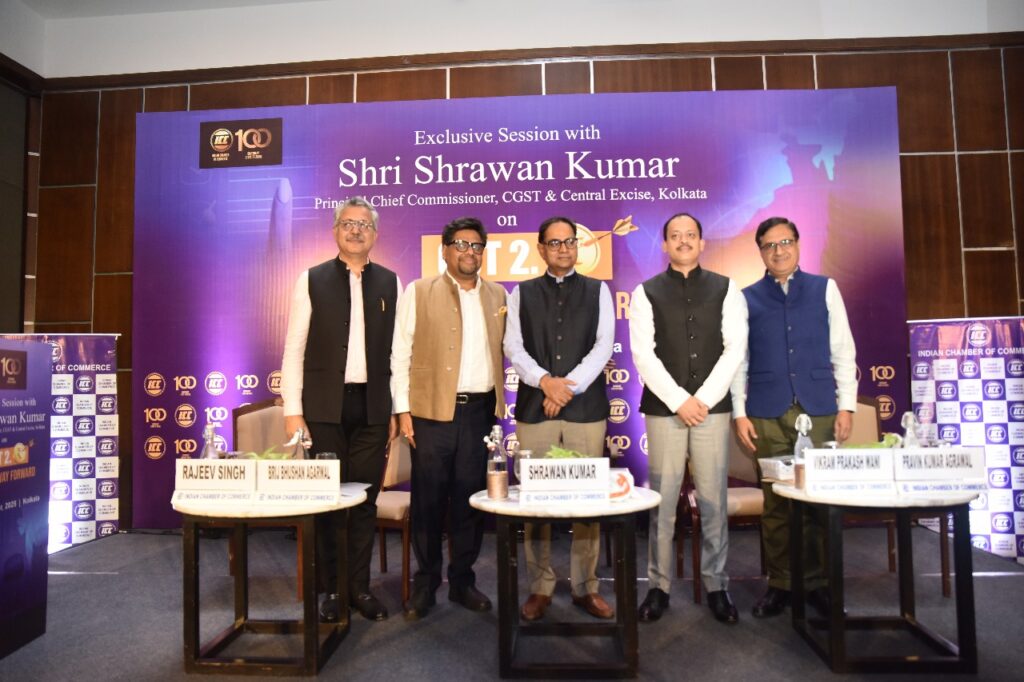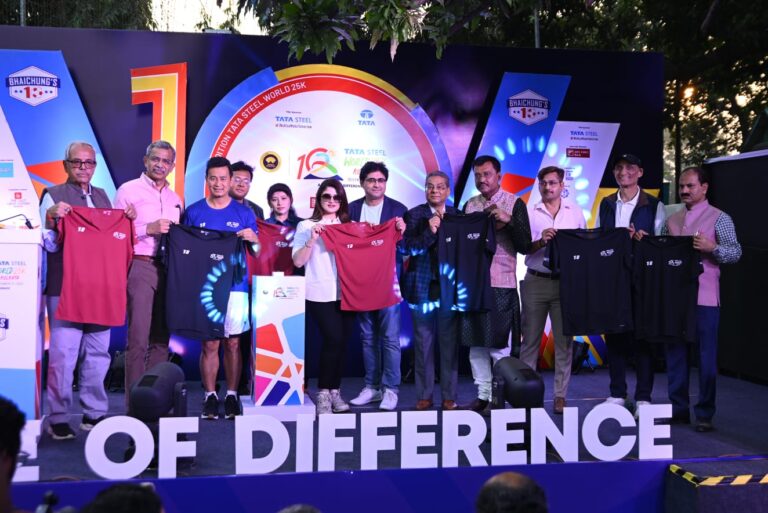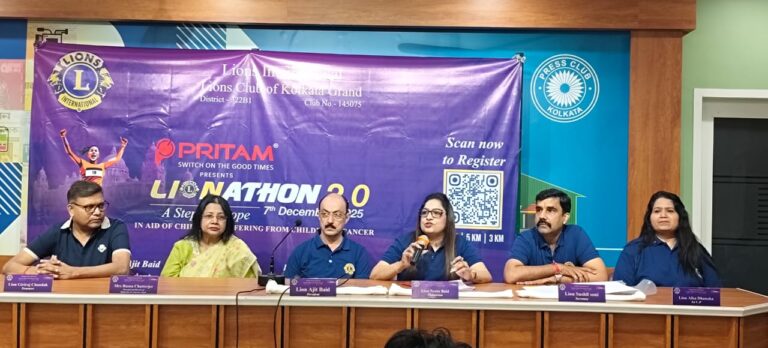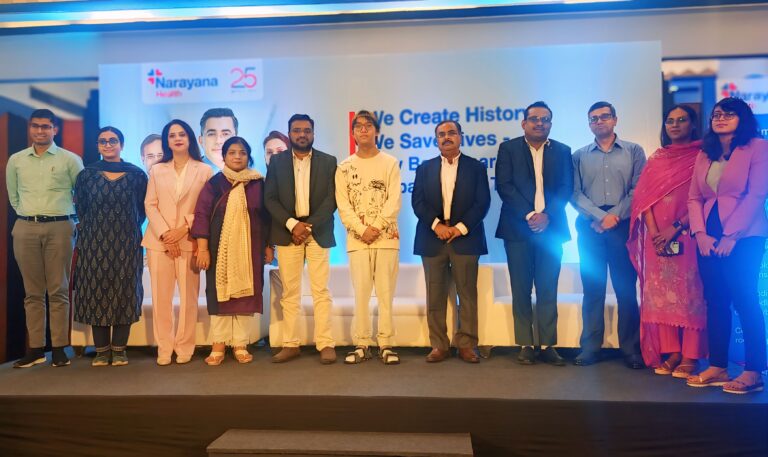
Kolkata, 7th November 2025: The Indian Chamber of Commerce (ICC) organised a high-level session on “GST 2.0: Impact & Way Forward”, focusing on the next phase of India’s indirect tax reforms aimed at creating a more transparent, efficient, and business-friendly system.The event witnessedl the participation of key policymakers and industry leaders, including Mr. Shrawan Kumar, Principal Chief Commissioner, CGST & Central Excise; Mr. Vikram Prakash Wani, Commissioner, Kolkata North; Mr. Pravin Kumar Agrawal, Commissioner, Audit–I Kolkata; Mr. Brij Bhushan Agarwal, President, ICC and CMD, Shyam Metalics & Energy Ltd; and Dr. Rajeev Singh, Director General, ICC.
GST: From Reform to Transformation
Reflecting on the journey of India’s indirect tax regime, Mr. Shrawan Kumar described GST as a watershed reform that unified India’s tax landscape by eliminating cascading taxes, creating a common national market, and simplifying compliance. Since its inception in 2017, 56 GST Council meetings have been held—each contributing refinements to strengthen the system.
He highlighted four major amendments introduced in the Union Budget 2024 to enhance compliance and fairness:
- Relaxation under Section 16(5), allowing retrospective relief for delayed input tax credit claims.
- Amnesty for notices (2017–2020) under Section 73, waiving interest and penalties in non-suppression cases.
- Introduction of Section 11A, enabling retrospective tax exemptions in genuine industry-practice cases.
- Insertion of Section 74A, standardising show-cause notice timelines to 3.5 years.
GST 2.0: Simplified Rates, Streamlined Processes
Elaborating on the post–September 2024 GST 2.0 reforms, Mr. Kumar said they rest on three pillars—rate restructuring, process reforms, and rate rationalisation.
Under the new structure, the GST slabs have been simplified to 5% and 18%, removing the earlier 12% and 28% categories to reduce disputes and compliance burden. Process reforms include:

- Faster registrations (within three days) for small taxpayers with monthly liabilities up to ₹2.5 lakh.
- Accelerated refund processing—90% within a week for compliant exporters.
- Operationalisation of the GST Appellate Tribunal across India, including Kolkata, from 1st December 2025.
On rate reductions, sectors such as healthcare, pharmaceuticals, fitness services, agriculture, construction, and food have benefited significantly. Insurance has been fully exempted from GST, while the tax rate on cement has been reduced from 28% to 18%. Only “sin goods” and luxury items remain taxed at 40%.
These reforms aim to boost consumption, ease business operations, and strengthen India’s competitiveness. Monthly GST collections have risen from ₹80,000 crore in 2017 to around ₹2 lakh crore, while India’s GDP growth projection has been upgraded to 6.8% by the RBI and IMF.
Mr. Kumar added that the revised GST rates will start reflecting on product price tags within 20–30 days.
Industry Welcomes Reforms
Offering an industry perspective, Mr. Brij Bhushan Agarwal, President, ICC, said,
“GST marked a historic milestone in India’s economic reform by unifying a fragmented tICC Hosts Dialogue on “GST 2.0”, Reaffirming India’s Commitment to a Simplified and Resilient Tax Ecosystemax system. The upcoming GST 2.0 phase strengthens governance through technology, streamlines administration, and enhances compliance simplicity.”He noted that features such as pre-filled returns, faster refunds, and streamlined registrations will particularly benefit MSMEs and exporters, while the new GST Appellate Tribunal will ensure timely dispute resolution.
“GST collections for October 2025 reached ₹1.95 lakh crore, reflecting strong market activity,” he added. “The simplified rate structure and structural corrections are expected to reduce costs, spur demand, and reinforce GST’s role as a dynamic framework aligned with economic realities.”
A Reform-Driven Growth Story
Dr. Rajeev Singh, Director General, ICC, commended India’s decade-long journey of fiscal and governance reforms.
“India’s transformation is driven by consistent efforts to make systems transparent, simple, and business-friendly. Effective coordination between policymakers and industry has ensured that reforms translate into real ease of doing business,” he said.
Dr. Singh emphasised that GST 2.0 underscores India’s ongoing commitment to economic modernisation and a forward-looking tax ecosystem that balances growth, compliance, and inclusivity.










